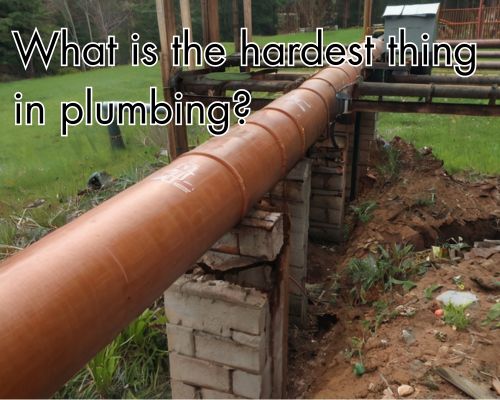
What is the Hardest Thing in Plumbing? Insights from Australia’s Trade Trenches
Plumbing isn’t just about wrenches and washers—it’s a highly skilled trade that demands precision, patience, and a deep understanding of complex systems. So, what is the hardest thing in plumbing? Ask a dozen Australian plumbers, and you’ll hear a range of answers, but one theme resonates across job sites from Brisbane to Bunbury: diagnosing and repairing concealed water leaks consistently tops the list of the most challenging plumbing tasks.

With Dean Owens of Plumber Warragul, let’s explore why this is the toughest nut to crack in plumbing, especially in the unique context of Australia’s climate, infrastructure, and building codes. Along the way, we’ll delve into related complexities, such as trenchless pipe repair, Australian Standards (AS/NZS 3500), and how professional plumbers navigate these challenges across varied environments from urban Melbourne to remote Outback communities.
Why Concealed Leaks Are a Plumber’s Nightmare
Unlike a dripping tap or a clogged drain, concealed leaks are notoriously elusive. They often occur behind walls, under floors, or in slab foundations—places you can’t access without cutting through materials or deploying advanced technology like acoustic sensors or thermal imaging.
1. Detection Requires Specialist Skills and Tools
Plumbers in Australia routinely invest in non-invasive leak detection technologies. These include:
- Thermal imaging cameras to identify temperature variations indicating a leak.
- Acoustic leak detectors that pick up the sound of water escaping under pressure.
- Moisture meters for tracing water damage behind walls or below tiling.
This isn’t just about finding the source—it’s about doing it without tearing up someone’s bathroom floor unnecessarily. That’s where Australian plumbers earn their stripes.
Site-Specific Challenges in Australia
Australia’s diverse geography adds layers of complexity to plumbing jobs. Here’s how local environments influence the hardest plumbing tasks:
🌏 Urban Areas (e.g., Sydney, Melbourne, Brisbane)
- Dense infrastructure means plumbing systems are often outdated, entangled, and difficult to access.
- Multi-storey residential buildings and heritage-listed properties restrict structural modifications.
- Strata management and council regulations may delay or complicate approvals.
🏜️ Remote and Rural Areas (e.g., Alice Springs, Broome)
- Access to parts and equipment is limited.
- Soil conditions (clay, sand, reactive soils) impact trenching and drainage design.
- Extreme heat can exacerbate pipe expansion and contraction, leading to subtle long-term leaks.
Systemic and Regulatory Hurdles
Even once a concealed leak is detected, fixing it isn’t straightforward. Australian plumbing regulations, particularly the AS/NZS 3500 Plumbing and Drainage Code, must be followed to ensure compliance.
Key requirements that complicate repairs include:
- Minimum pipe cover depths depending on soil and usage zones.
- Backflow prevention to protect potable water systems.
- Water efficiency labeling (WELS) for new fixtures, mandatory in all states.
It’s not just about knowing how to solder a pipe—it’s about ensuring that repair won’t violate any code, trigger future liability, or compromise safety.
Other Contenders for “Hardest Plumbing Task”
While leak detection reigns supreme, other challenges frequently test even the most seasoned tradies.
🧯 Fire Safety Systems
Installing or retrofitting hydrant booster systems or fire sprinklers in existing structures can be a logistical labyrinth. Strict regulations under the National Construction Code and Fire Protection Association Australia (FPA Australia) guidelines make it high-stakes work.
🛁 Retrofitting Plumbing in Renovations
Older Australian homes—especially in areas like Fitzroy (Melbourne) or Newtown (Sydney)—pose significant retrofitting issues due to outdated materials like galvanised pipes, asbestos, or narrow wall cavities. You’re not just upgrading plumbing; you’re performing surgery on a 100-year-old patient.
Why DIY Can Be a Disaster
Some homeowners might think plumbing is a weekend project, but improperly addressing complex tasks like concealed leaks can cause:
- Structural damage (especially in slab-on-ground homes common in Perth and Adelaide)
- Mould growth and associated health risks
- Void insurance policies due to non-compliant or unlicensed repairs
Licensed plumbers in Australia like Dean Owens of Plumber Warragul undergo rigorous training through Certificate III in Plumbing (CPC32420), which covers everything from hydronic heating to gasfitting. Trusting professionals isn’t just smart—it’s often required by law.
Tools of the Trade: Modern Plumbing Tech in Australia
To navigate these hard tasks, Aussie plumbers are increasingly turning to:
- Pipe relining systems, which avoid the need to dig up pipes entirely
- Hydro jetters to clear deep blockages with high-pressure water
- Smart leak detection systems that integrate with home automation
Especially in cities like Canberra and Hobart, where heritage overlays restrict invasive procedures, tech-enabled, non-invasive solutions are the only viable option.
Case Study: Leak Headache in a Brisbane Queenslander
Take a heritage-listed Queenslander home in Brisbane’s inner suburbs. The homeowner notices water pooling in the yard but no obvious source. A licensed plumber uses acoustic sensors to trace the issue to an old copper pipe beneath the deck.
However, excavation isn’t allowed without approval due to the property’s protected status. The plumber opts for a trenchless pipe patch, inserts it via an access point, seals the leak, and provides documentation for future compliance audits.
Hard? Absolutely. But routine for a qualified Aussie plumber.
Final Thoughts: Respect the Trade, Respect the Complexity
So, what is the hardest thing in plumbing? In the context of Australia’s unique challenges, diagnosing and repairing concealed leaks remains at the top due to the blend of technical skill, regulatory compliance, and situational adaptability it requires.
Yet, it’s this very complexity that makes the plumbing trade so essential. Whether you’re a homeowner in Gold Coast dealing with leaky pipes, a builder in Ballarat retrofitting for rainwater harvesting, or a strata manager in Darwin fielding complaints about water pressure, skilled plumbers are the frontline defense against water damage, inefficiency, and costly code violations.

